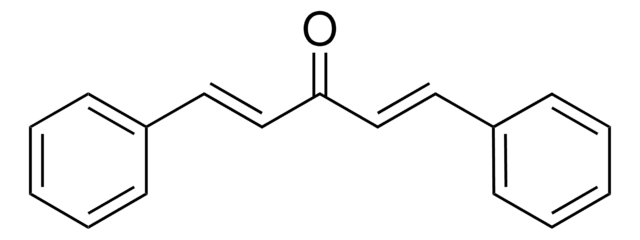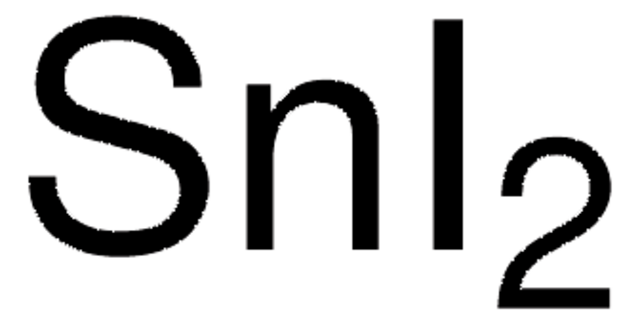Key Documents
203033
Cesium iodide
99.999% trace metals basis
Synonim(y):
Caesium iodide, Caesium monoiodide
About This Item
Polecane produkty
Poziom jakości
Próba
99.999% trace metals basis
Postać
solid
zanieczyszczenia
≤15.0 ppm Trace Metal Analysis
mp
626 °C (lit.)
gęstość
4.51 g/mL at 25 °C (lit.)
ciąg SMILES
[I-].[Cs+]
InChI
1S/Cs.HI/h;1H/q+1;/p-1
Klucz InChI
XQPRBTXUXXVTKB-UHFFFAOYSA-M
Szukasz podobnych produktów? Odwiedź Przewodnik dotyczący porównywania produktów
Zastosowanie
It can be used to prepare brightest red emitting Cs2HfI6 scintillator which is applicable in high resolution gamma spectroscopy.
It can also be used tosynthesize Cesium based nanocrystals for the detection of ionizingradiations.
Cechy i korzyści
- High quantum efficiency
- High stability to ambient air and gas environment
Hasło ostrzegawcze
Warning
Zwroty wskazujące rodzaj zagrożenia
Zwroty wskazujące środki ostrożności
Klasyfikacja zagrożeń
Aquatic Acute 1 - Repr. 2
Kod klasy składowania
13 - Non Combustible Solids
Klasa zagrożenia wodnego (WGK)
WGK 2
Temperatura zapłonu (°F)
Not applicable
Temperatura zapłonu (°C)
Not applicable
Środki ochrony indywidualnej
dust mask type N95 (US), Eyeshields, Faceshields, Gloves
Wybierz jedną z najnowszych wersji:
Masz już ten produkt?
Dokumenty związane z niedawno zakupionymi produktami zostały zamieszczone w Bibliotece dokumentów.
Klienci oglądali również te produkty
Produkty
Colloidal quantum dots (CQDs) are semiconducting crystals of only a few nanometers (ca. 2–12 nm) coated with ligand/surfactant molecules to help prevent agglomeration.
Nasz zespół naukowców ma doświadczenie we wszystkich obszarach badań, w tym w naukach przyrodniczych, materiałoznawstwie, syntezie chemicznej, chromatografii, analityce i wielu innych dziedzinach.
Skontaktuj się z zespołem ds. pomocy technicznej











